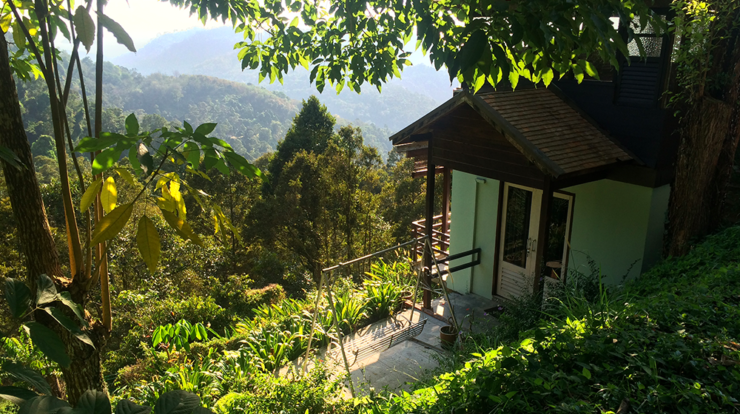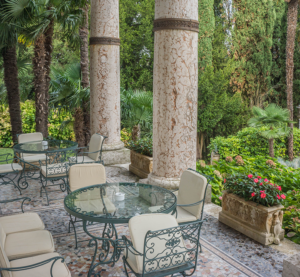

Project Profiles
Here to Stay: Biophilic Design in Hospitality
Rebecca Macies
Share
Learn more about our biophilic design work and services by emailing us at [email protected] and reading our reports, 14 Patterns of Biophilic Design and The Economics of Biophilia. Follow the conversation on twitter: @TerrapinBG | #14Patterns.
The benefits of biophilic design have been well documented by studies showing the physiological and psychological benefits of connecting people with nature. Much of this research has focused on workplace wellbeing and the benefits derived from strategic biophilic design interventions in office buildings.
Terrapin, in collaboration with Interface and Gensler, is now continuing its research in biophilic design to explore the effects on guest experience and user trends in the hospitality industry, and whether there exists a positive correlation between biophilic design and increased revenue. Currently, no data exists regarding biophilic design and the hospitality industry.
Cornell University’s Center for Hospitality Research has studied “The Impact of LEED Certification on Hotel Performance”. Measuring hotel performance using occupancy, average daily rate (ADR), and revenue per available room (RevPAR), the study found that “hotels which had obtained LEED certification performed better financially than their non-certified competitors.” Our research will build upon this study and look at biophilic design both in hotel guest rooms, as well as in ancillary spaces including lobbies and restaurants.
Room with a View – Preliminary Results
Does biophilia—our innate connection with nature—impact our willingness to pay for a hotel room? Are we willing to pay more for a room with a view? To find out, we undertook an exercise using online pricing of hotel rooms to validate the hypothesis, that rooms with a view to nature, in particular to water, are consistently priced higher than rooms without.
Using an online booking website, Hotels.com, we observed pricing trends for rooms both with and without a view. The study included only hotels that differentiated rooms by view type, and further divided hotels into two categories: Resort and Urban. We analyzed the two hotel categories separately because urban hotels typically have a “city view” that resort hotels generally do not. The study looked at hotels in locations around the world, sampling different countries, climates, and cultures. Using the collected room rates, we looked at the price difference between the different view types.
Biophilic Design Case Studies

Patio at the Villa Cortine Palace Hotel in Sirmione, Italy. The building materials and details, furniture, and view each contribute to the biophilic experience of the space.
The Hotels.com comparison focused only on guest rooms. However, our experience at a hotel is more than just the room we stay in. What does biophilic design look like in the rest of the hotel and how does it impact guest behavior? The next step of this research is to observe how hotels are using biophilic design in ancillary spaces such as the hotel lobby, restaurant and bar, pool deck, and spa facilities.
Using the 14 Patterns of Biophilic Design as a framework, we are surveying a selection of hotels and their amenities to observe how, and to what extent, hotels are using biophilic design. Are there trends or parallels worth noting? Are there correlations with room pricing?
In the future, we hope to determine whether biophilic design intensity in certain amenities influences dwell time and whether there is statistical significance in revenue generated by the amenity relative to the hotel room rates.
Stay tuned for case studies and other publications to come out of this effort.
Filed under:
Rebecca Macies
Rebecca is the Director of Operations at Terrapin and has a background in natural resource policy and management. She is interested in how policy helps shape our relationship to nature, and how we can work with and learn from natural systems to address human needs.
Topics
- Occupant Comfort
- Materials Science
- Speaking
- LEED
- Terrapin Team
- Phoebe
- Community Development
- Greenbuild
- Technology
- Biophilic Design Interactive
- Catie Ryan
- Spanish
- Hebrew
- French
- Portuguese
- Publications
- Carbon Neutrality
- Environmental Values
- Conference
- Psychoacoustics
- Education
- Workshop
- Mass Timber
- Transit
- Carbon Strategy
- connection with natural materials
- interior design
- inspirational hero
- biophilia
- economics of biophilia
- Sustainability
- Systems Integration
- Biophilic Design
- Commercial
- Net Zero
- Resorts & Hospitality
- Energy Utilization
- Water Management
- Corporations and Institutions
- Institutional
- Ecosystem Science
- Green Guidelines
- Profitability
- Climate Resiliency
- Health & Wellbeing
- Indoor Environmental Quality
- Building Performance
- Bioinspired Innovation
- Biodiversity
- Residential
- Master Planning
- Architects and Designers
- Developers and Building Owners
- Governments and NGOs
- Urban Design
- Product Development
- Original Research
- Manufacturing
- Industrial Ecology
- Resource Management
- Sustainability Plans
- Health Care


